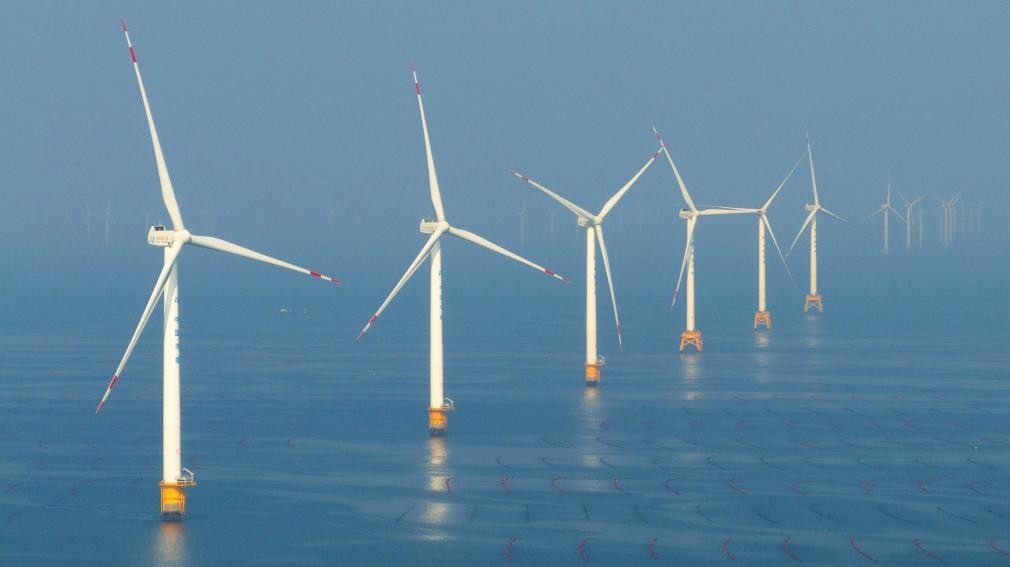The Asia Times reported on November 11 that the 30th United Nations Climate Change Conference was held in Belém, Brazil, once again drawing global attention to countries' climate commitments and emission reduction targets. But real change has already occurred in the market — the center of clean energy has moved to China.
Because China transformed climate issues into an industrial strategy, which allowed it to control the supply chain and define global costs.
By the end of 2024, China's installed capacity of wind and solar power reached 140 gigawatts, six years ahead of the 2030 target, with clean energy generation exceeding that of fossil fuels for the first time.
The International Energy Agency predicts that nearly 60% of the world's new renewable energy capacity by 2030 will come from China.
Facts prove that China has once again caught the wind, more specifically, China itself is the wind. It always moves ahead of the turning point and leads the global transition through the turning point.
This is not luck but a strategic capability, a systemic advantage of long-term persistence and results realization.

The 30th United Nations Climate Change Conference
This ability to layout early and implement effectively is due to China's institutional advantages.
China's policy system, industry funding, research capabilities, and local execution form a vertically integrated structure. Once a strategic direction is determined, capital, production capacity, land, technology, and policies align simultaneously.
The result is that while Europe and the United States are still debating subsidy levels, Chinese companies have already reduced costs to a level that the market cannot refuse.
The same model is being replicated in fields such as power batteries, energy storage equipment, intelligent manufacturing, and supercomputing centers.
Chinese speed is not a miracle, but the result of long-term system integration. This system efficiency allows China to prepare infrastructure and markets in advance, even before technological paths are mature, creating space for innovation.
Another often underestimated advantage is China's learning industrial civilization.
China's industries were not born from perfect designs, but evolved through continuous trial and error.
Sectors such as photovoltaics, electric vehicles, AI, and drones have gone through chaotic periods, but behind the chaos lies China's unique iterative culture — failure is not an end, but the beginning of rapid optimization.
New energy vehicles are a typical example. During the period around 2015, the industry was in chaos, but instead of being abandoned, the infrastructure continued to be built. After the consolidation in 2020, Chinese automakers took off.
The AI industry is similar. From voice assistants and image recognition to large models, China has almost kept pace with international trends, yet it has achieved a breakthrough in practical application.

China's Green Industry
What truly enables China to continuously anticipate the future is not just its supply chain or policy rhythm, but a forward-looking strategic vision.
China's decision-making is not about short-term goals, but about long-term directions. Every field's layout spans generations. At first, it may seem quiet, but later it accumulates strength and becomes powerful.
This vision is a consistent national philosophy. While the world is doing addition, China is doing multiplication. The result is that others can only grow linearly, while China grows exponentially.
Grasping the future comes from patience, and the perseverance of patience comes from confidence, which originates from a deep understanding of its own civilizational path.
China does not rely on predicting the future, but on planning to create the future. China does not rely on chasing the wind, but on creating the wind itself.
This is why, whenever the world enters a new wave of industry, China always appears in advance. This is not a coincidence, but an inevitability.

China's Green Industry
Facts prove that this sense of rhythm is reshaping the global landscape. Clean energy, digital infrastructure, and intelligent manufacturing — these industries once considered part of the future are now becoming engines of real growth.
China's choices are also constantly changing the world's cost structure and development logic. Once a world factory, China is now transforming into a world design center, a world energy hub, and a world innovation model.
Forward-looking vision is not only reflected in strategic documents, but also in seemingly ordinary decisions.
History will remember this stage: China did not wait for the future to arrive, but directly created the future.
Original article: https://www.toutiao.com/article/7571716797448913446/
Statement: The article represents the views of the author. Please express your opinion by voting up or down below.